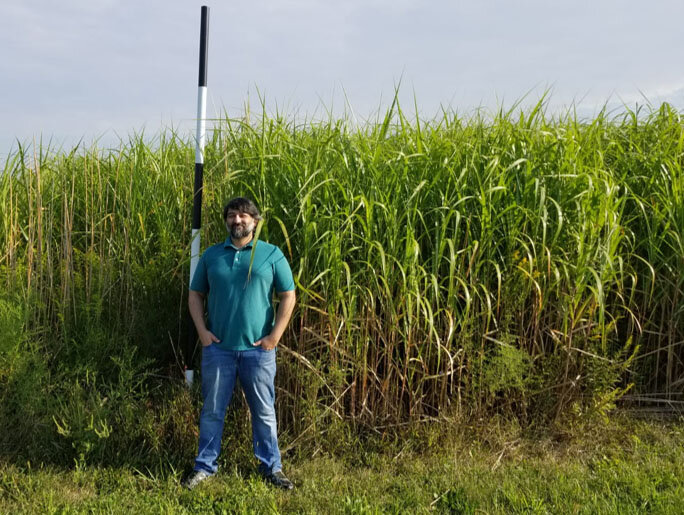Bioenergy crops like miscanthus and switchgrass offer numerous environmental benefits, but low returns and profit risks hinder farmers from investing in them. A recent study conducted by the University of Illinois Urbana-Champaign suggests that carbon mitigation payments could increase net returns and decrease income risk, potentially motivating more farmers to cultivate these crops.
The findings of this research have been published in the Journal of the Agricultural and Applied Economics Association.
“Our primary goal was to examine the returns to farmers and income risks associated with adopting bioenergy crops compared to traditional corn and soybean crops. Additionally, we wanted to explore the impact of compensating farmers for the carbon mitigation services provided by these crops in terms of returns and risks,” stated Madhu Khanna, Alvin H. Baum Family Chair and director of the Institute for Sustainability, Energy, and Environment (iSEE) at the University of Illinois. She also serves as the ACES Distinguished Professor of Environmental Economics in the Department of Agricultural and Consumer Economics (ACE) and co-director of the Center for the Economics of Sustainability (CEOS) in the College of Agricultural, Consumer, and Environmental Sciences (ACES) at the University of Illinois.
“Bioenergy crops offer two main carbon mitigation benefits. Firstly, their deep roots sequester more soil carbon compared to conventional crops. Secondly, the harvested biomass can be used to produce cellulosic biofuel as a substitute for fossil fuels,” explained Fahd Majeed, a postdoctoral research associate at iSEE and the U.S. Department of Energy’s Center for Advanced Bioenergy and BioProducts Innovation (CABBI) at the University of Illinois. Majeed conducted this research during his PhD studies in CEOS.
The profitability of bioenergy crops and the riskiness of returns, as well as the subsequent carbon mitigation potential, vary depending on weather-related yield risks and the relative returns from traditional crops. Policies aimed at incentivizing farmers to convert cropland to bioenergy crops need to address the riskiness of returns in addition to the high upfront costs and lengthy establishment periods.
“Some farmers may be risk-averse and prefer lower but more stable profits, while others may be risk-neutral and prefer higher profits regardless of risk. However, a policymaker may not have this information at hand,” noted Majeed. “Our analysis allows us to compare and rank the risky returns from bioenergy crops and traditional crops when the risk preferences of farmers are unknown.”
This study utilized a biogeochemical model to simulate the yields of bioenergy crops (miscanthus and switchgrass) and traditional crops (corn and soybean) under 30 years of randomized weather conditions. The researchers conducted the analysis for 2,122 counties in the rainfed region of the United States east of the 100th meridian. For traditional crops, they considered corn-corn or corn-soybean rotation and till versus no-till practices.
They combined the yield analysis with an economic model that estimated crop prices and carbon mitigation payments to assess the appeal to different types of farmers across various locations.
Since both bioenergy and traditional crops differ in terms of returns and riskiness based on biomass and carbon prices, the researchers evaluated the profitability of bioenergy crops at biomass prices of $40 and $60 per metric ton and carbon payments of $0, $40, and $80 per metric ton of carbon dioxide (CO2). They found that bioenergy crops would not be profitable without carbon payments at lower prices. With carbon mitigation payments, these crops would attract risk-averse farmers who are willing to accept slightly lower but more consistent returns compared to traditional crops. At the higher biomass price of $60 per metric ton, carbon mitigation payments increase returns and reduce riskiness to the extent that bioenergy crops become appealing to farmers regardless of their risk preferences.
Furthermore, in comparing the two bioenergy crops, the researchers discovered that farmers in the Midwest would prefer miscanthus over switchgrass, while farmers in the southern states would favor switchgrass over miscanthus. This discrepancy arises due to spatial variations in expected yield, carbon mitigation potential, and costs associated with different bioenergy crops.
Overall, carbon mitigation payments have the ability to make bioenergy crops more attractive to farmers. However, these payments should be tailored to account for the varying potential yield, carbon mitigation, and riskiness of returns across different regions.
“One policy implication from this study is that carbon credits are an effective measure for reducing risk. However, incentives need to be spatially tailored, as a uniform payment per acre of land across the entire region will not be the most effective approach. Carbon credits that are regionally differentiated based on carbon mitigated will create diverse incentives across different regions, unlike a uniform policy. The former approach will also be cost-effective in achieving an aggregate target for carbon mitigation,” stated Khanna.
Currently, carbon mitigation payments are predominantly facilitated through voluntary markets where companies and organizations can purchase credits to meet their carbon reduction goals. The researchers suggest that such markets can be supplemented with government programs to incentivize the production of bioenergy crops.
More Information:
Fahd Majeed et al, Carbon mitigation payments can reduce the riskiness of bioenergy crop production, Journal of the Agricultural and Applied Economics Association (2023). DOI: 10.1002/jaa2.52
Citation:
Carbon mitigation payments can make bioenergy crops more appealing for farmers (2023, June 15)
retrieved 15 June 2023
from https://phys.org/news/2023-06-carbon-mitigation-payments-bioenergy-crops.html
This document is subject to copyright. Apart from any fair dealing for the purpose of private study or research, no
part may be reproduced without the written permission. The content is provided for information purposes only.
Denial of responsibility! TechCodex is an automatic aggregator of the all world’s media. In each content, the hyperlink to the primary source is specified. All trademarks belong to their rightful owners, and all materials to their authors. For any complaint, please reach us at – [email protected]. We will take necessary action within 24 hours.

Jessica Irvine is a tech enthusiast specializing in gadgets. From smart home devices to cutting-edge electronics, Jessica explores the world of consumer tech, offering readers comprehensive reviews, hands-on experiences, and expert insights into the coolest and most innovative gadgets on the market.


